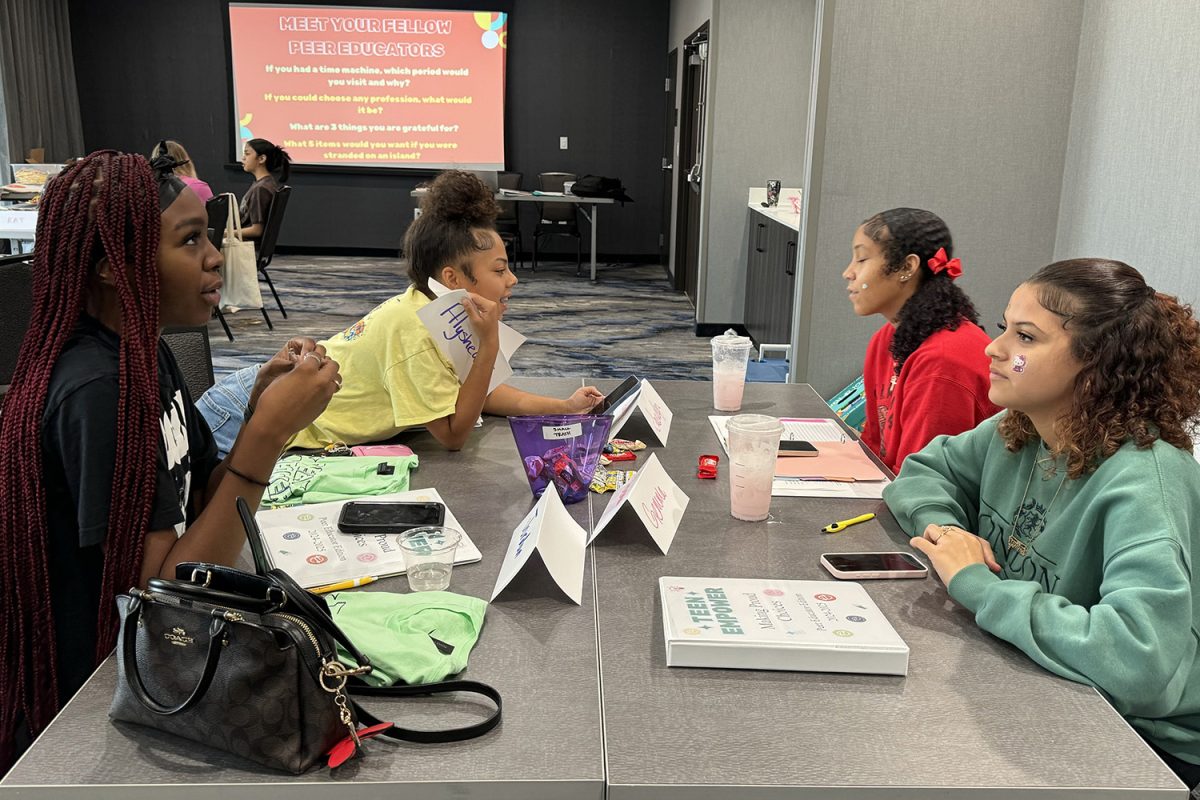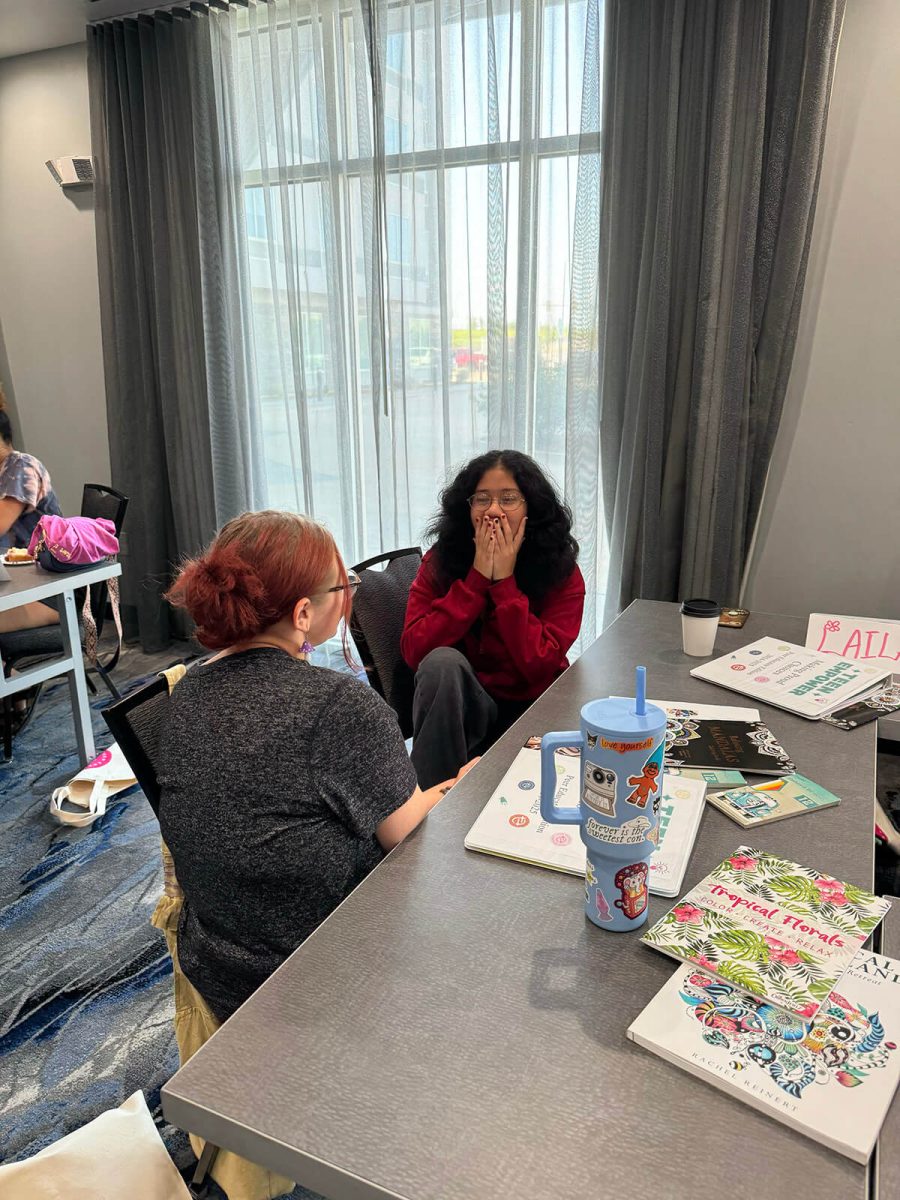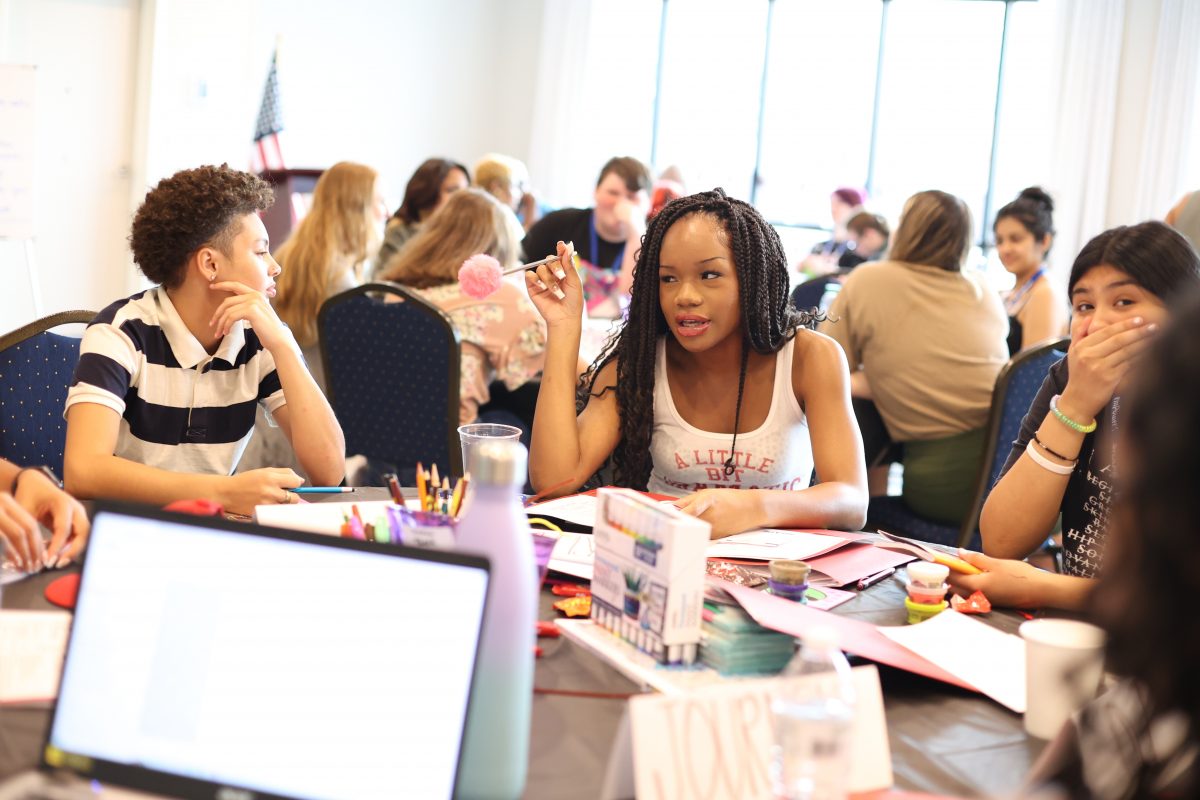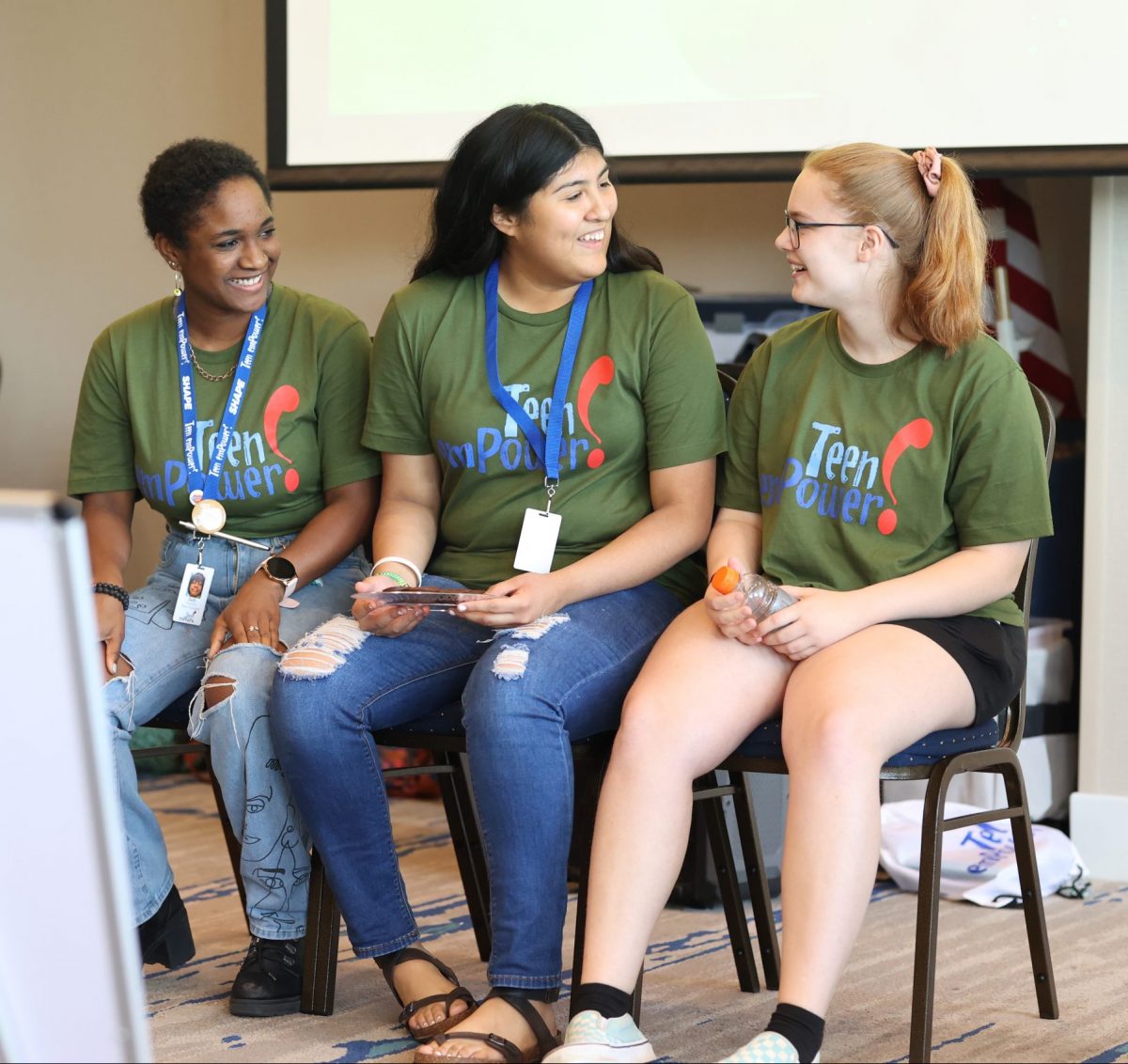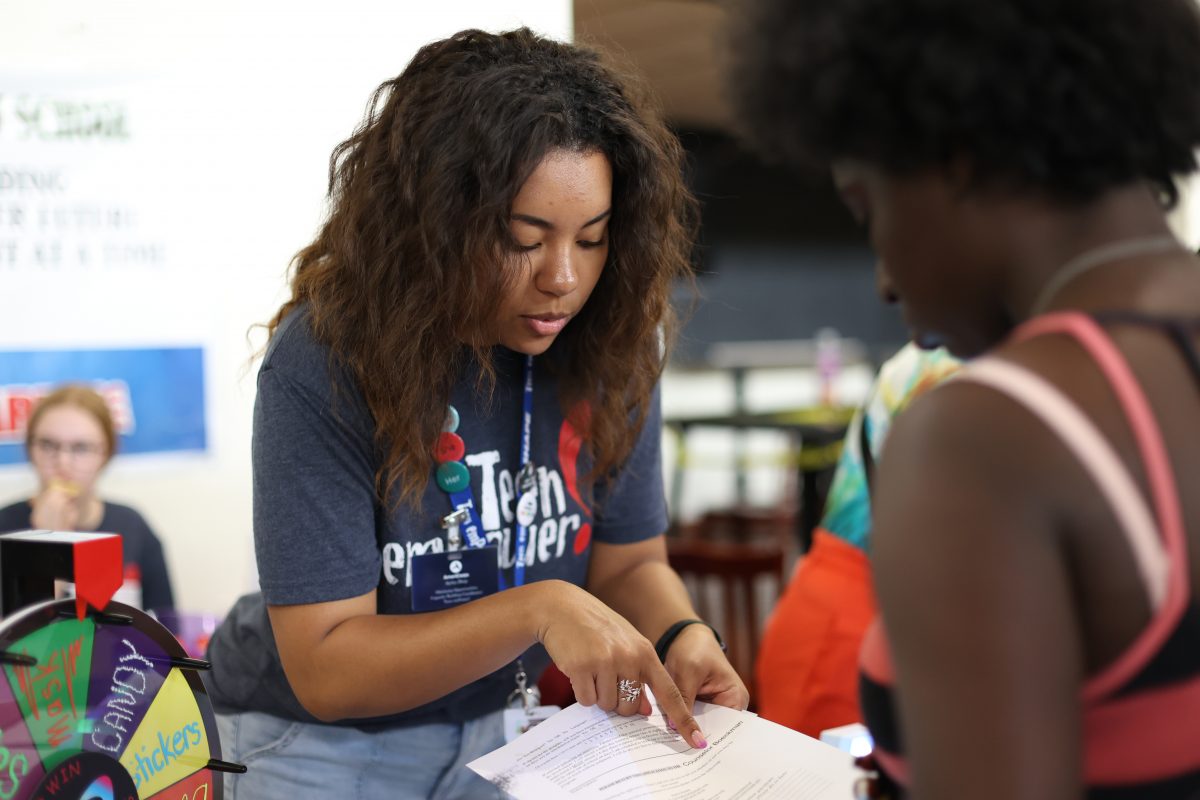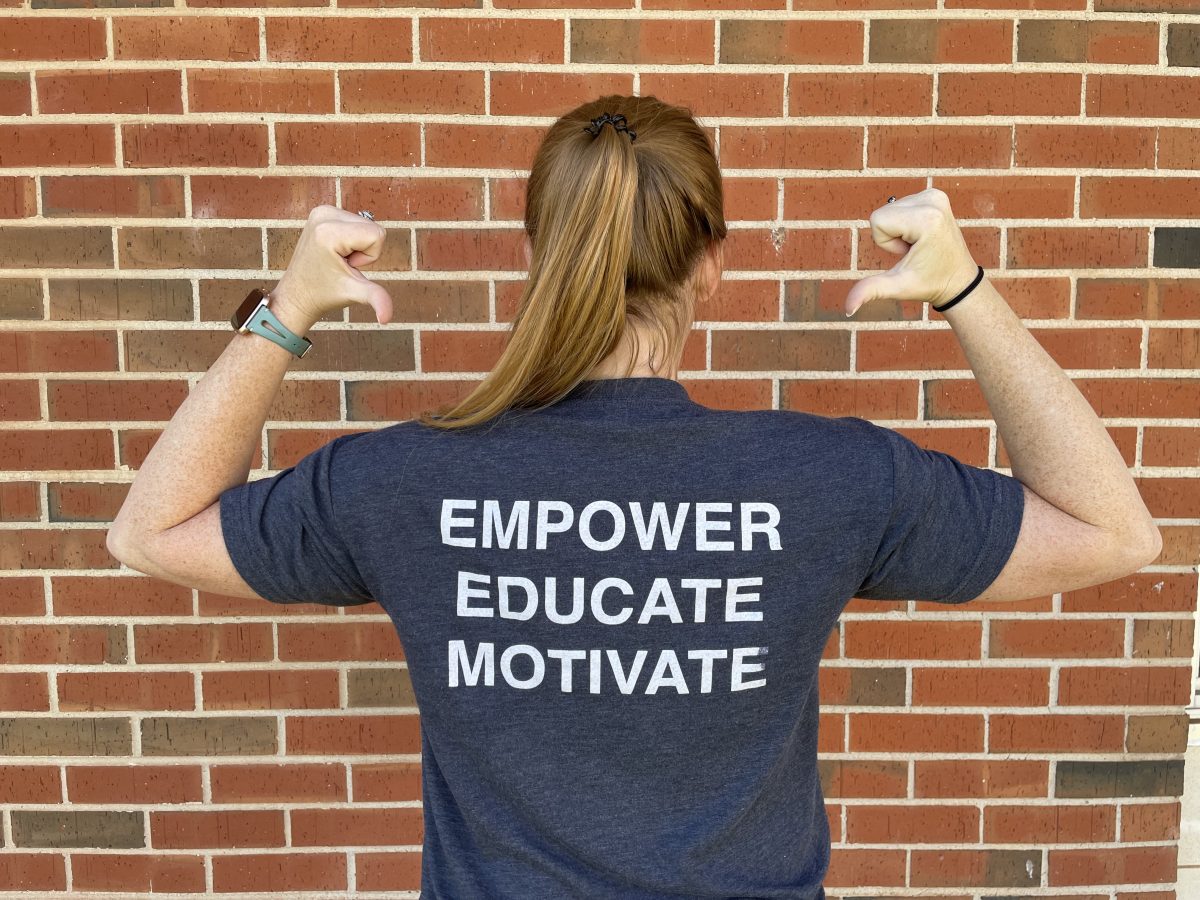Posts by Lillian Bocquin
Sexually Transmitted Infections: Crash Course
In the classroom, some of the most exciting information for young people are the lessons on sexually transmitted infections, STIs.
It makes sense, as we are usually in science classes and this part of the curriculum talks about the spread of disease, viral load, medically accurate prevention measures, testing, etc. It’s applicable science and it’s something we talk about in detail because we know parents and other caregivers may not have all of the info. And, we know these young people may not be able to access a doctors office easily in order to ask their questions in a private setting.
It’s incredibly rewarding to see these young people love learning and problem solving through examples of real-life situations where there may be risk. These types of lessons prepare them for potentially risky situations later in life and set them on a path for healthy decision-making.
Our lessons, which sometimes span over several days, include a bit more engaging material than we can include in a single blog post, but here is a crash course in what we consider the most important information for all people to have when it comes to sexually transmitted infections.
Crash Course Information on STIs
- Sexually transmitted infections (STIs) and sexually transmitted diseases (STDs) are the same thing. We use STI for the reasons listed in this social media post but both terms are generally accepted!
- Some STIs are curable, meaning someone could take medicine and completely get rid of the infection. These include Syphilis, Chlamydia, Gonorrhea, Trichomoniasis, and Pubic Lice.
- Some STIs are treatable but not curable, meaning when someone gets the disease they have it for life. These include HIV (Human Immunodeficiency Virus), HPV (Human Papillomavirus), Herpes and Hepatitis B.
- Notice these all start with H, so if you forget which ones are curable vs. treatable, the ones starting with the letter H are treatable but not curable.
- Most STIs can be spread through oral sex, anal sex, or vaginal sex. Some can be spread through skin to skin contact, and some from mother to child during birth or breastfeeding.
- STIs can be prevented through abstinence – can’t get an STI if someone doesn’t have sex!
- STIs can be prevented through proper condom use – meaning consistent and correct use of the condoms!
- STIs cannot be prevented through use of contraception or birth control.
- If possible, getting tested between new partners can help prevent the spread of STIs and clearly track STI spread if it happens.
- STI testing may be offered for free at some clinics like Guiding Right, Teen Clinic, and Oklahoma City County Health Department. Some of these may only offer same-day appointments!
- STI testing usually doesn’t take more than 20 minutes in a doctors office to complete, but results may take longer to get back. Anywhere from 2 days to two weeks.
- STI tests for gonorrhea, chlamydia, herpes, and HPV in the throat (remember we said in #4 that oral sex can spread STIs) are done through a mouth swab.
- STI tests for chlamydia, gonorrhea, and syphilis in the anus are done through rectal swabs.
- STI tests for chlamydia, gonorrhea, and trichomoniasis in the vagina are done through vaginal tests.
- STI testing can also be done through blood tests. They don’t take much!
- Urine tests may also be used to diagnose trichomoniasis, chlamydia, and sometimes gonorrhea.
- It’s good practice to wait about 2 weeks after unprotected sex to get tested. Getting tested too early after unprotected sex may not yield accurate results.
Is everything we have mentioned here fully comprehensive? No! Because this is a crash course, the basics, and based on the most common questions we get in the classroom. If anyone has further questions, ask a health educator or doctor. STIs are preventable – it all starts with being educated.
Defining Healthy Relationships for Youth in the Digital Age
Young people nowadays may identify healthy relationships differently than their parents or older generations. It’s important for adults to understand the differences and nuances of relationships for young people – especially in a world with so much access to each other through media and technology.
So how much has really changed?
Some aspects of a healthy relationship have not changed. For example, most young people would still identify healthy relationships as those that have honesty, communication, trust, loyalty, and several other relationship characteristics we might define as the “basics.” The real changes are in how these basic needs for a healthy relationship are shown.
Honesty and communication
Any healthy relationship is going to have open and honest communication. However, given that young people can live in almost constant contact with one another, the definitions of healthy communication are a bit different than they were 20-30 years ago.
There is no stopping phones, texting, DM’s, or any social media really, although you could try to limit your kids use of tech. HOWEVER, instead of fighting against it or telling the young people you know how constant use of these develop bad habits, we have to think creatively about how to get them thinking, for themselves, how they use these tools.
A young person knows that in-person time with their partner is better than any virtual messaging, so reframe that to help them see how much more engaged they could be in all their relationships if they put the phone down. Putting away the tech is a way to show respect, genuine interest, and admiration when you’re spending quality time with someone. If they would want to show that to their partner, or if they would want that from their partner, they can learn to show that to anyone they care about.
With the rise of social media and influencers, there are also more difficult topics being addressed in public forums. For example, some social media encourages people to get unplugged and get outside. #TouchGrass Other content may romanticize time alone, with the phone turned off and a relaxing tv show or book to stay entertained. Being connected online can lead to the discovery of new healthy hobbies or interests, and can show what honesty in a relationship really looks like (It’s not all bad!)
Loyalty and Trust
For a healthy amount of loyalty, people in a relationship need to feel secure that their partner will not stray from the bounds of the relationship. In an exclusive relationship this can include not being intimate with another person, or not “cheating,” which is the common term for being intimate with someone outside the relationship.
Where things get tricky with young people today, is what is included in the definition of cheating. Does liking another person’s story on Instagram count as cheating? Does responding to the person who put a fire emoji under their picture count as cheating? And do the people in the relationship have a right to check all this information?
Whether they have a right to check or not, if someone’s profile is publicly available, they can usually see these interactions. Individual partnerships should be encouraged to discuss boundaries in their relationship, without controlling what the other individual in that relationship does with their personal accounts. A young person can learn that it’s not okay to say “You can’t talk to them, unfollow them right now,” but they can express their feelings to their partner by saying “I saw this and it makes me a bit uncomfortable. Can we talk about how I could feel more secure in this relationship?”
Big difference there, right? And young people GET IT. These relationship lessons are important for them now and in the future.
Where do we go from here?
These are just a few examples of how teaching young people about healthy relationships should include consideration of modern realities that affect their relationships. When adults can acknowledge that social media and technology WILL be a part of relationships, and not fight it, it helps open young people to the idea that this adult might know a thing or two. Adults have to build that trust to be able to fully educate a young person about relationships, and building that trust is helpful for parents and teachers alike.
Condom Use Continues to be Stigmatized
Condoms can prevent pregnancy and sexually transmitted infections, but use of condoms continues to be stigmatized. This comes from social settings, media outlets, and even the limitations of sex ed in schools.
It’s too difficult to purchase condoms at the store.
At some local convenience stores, condoms can be found in locked display cases or behind the clerk counter. This is to deter people from stealing them, but it also deters people from buying them. Young people, especially, may be too nervous to ask for help purchasing condoms, and in small towns this could seem even more embarrassing for fear of the store employee knowing them or their family personally.
Young people may not know there is no age limit to purchasing condoms at a store and believe they have no other option besides stealing them to access protection. Sexual health education could help address this issue by educating young people on other places to access free barrier methods, like youth-friendly clinics, and inform them that there is no age limit to purchasing condoms from the store. Ultimately, barriers to using barrier methods limit the safe choices teens could make.
We hear about misuse of condoms in music media.
Dababy has a song explicitly called No Condom, where he talks about having sex with his partner without protection because “that’s how she told me she want it.” He also states in the song that he “don’t need no new baby mama’s” which is interesting because that implies he has had sex without condoms before, resulting in unexpected pregnancies with other women.
You would think he has learned his lesson.
A favorite 2009 throwback, I Love College by Asher Roth, includes some “rules” that he learned in college including “Don’t have sex if she’s too gone, When it comes to condoms, put two on.” While the first line is an excellent reminder that consent cannot be given if someone is too intoxicated, the second line perpetuates a barrier method myth that we try so hard to help young people unlearn. Two condoms are not better than one, in fact, that can cause friction and cause them to break. Here’s to hoping college students today know better.
There are plenty of songs that reference using condoms for protection, but even those songs often discuss sexual exploitation, perpetuate mistreatment of women, or encourage risky sexual behavior.
Condoms are hardly present or the butt of the joke in tv/movie media.
There are plenty of movies and tv shows that reference sex. Euphoria, Mean Girls, Friends, … and these aren’t even the shows that focus on sex. But what is missing from the implicit or sometimes, explicit, scenes about sex? Protection! There are little to no references to condoms or protection in shows where sex is included, but not the focus.
Then there are movies and shows where sex is the focus, like Big Mouth , Fifty Shades of Grey, or Sex Education, and condom use may be explicit or implicit. But these shows often utilize humor in a way that can be distracting or stigmatizing when it comes to condom use, and the movie representations are hardly realistic.
Example: Mean girls. Instead of the scene where Coach Carr tries to pass out condoms (which we would say is an unrealistic expectation for health class), I want to bring attention to the scene where Regina George’s mom offers condoms to her daughter while Regina is already vigorously kissing her partner. It’s funny because it’s so unlikely a mom would really offer that, but do we get to see any normalization of condom use? We need media that includes condom use as a regular part of the experience without making it a joke or utilizing it for a plot point.
Condom use skills are not prioritized in wellness education for young people.
While we teach medically accurate and age appropriate condom use skills in the classroom, not every young person in Oklahoma receives this level of education. Too many young people grow up and never have condoms normalized, making it more difficult for them to feel comfortable using them when needed. Even lessons that only discuss when and why to use condoms are not enough. Safe and shame-free examples of how to use condoms are necessary to destigmatize condom use.
Condoms are a powerful tool for pregnancy prevention and STI prevention, but only if they are used correctly and consistently. The key to proper use is destigmatizing condoms in the settings mentioned above, and providing judgement free and shame free education on healthy sexual decisions.
We Want Healthy Futures For Our Youth
I chose to become an educator because I want to equip youth with the tools necessary to be successful. Sexual health education particularly spoke to me because I know the potential outcomes of early sexual involvement and how these outcomes can have lasting impacts. Here at Teen emPower! Inc., we believe every young person deserves the chance to make healthy decisions that empower them to create the life of their dreams.
Of course, parents want the same thing. However, not all parents are equipped with the necessary sexual health information that young people need because of the lack of sexual health opportunities provided in our state and indeed, our country. Additionally, not all parents feel comfortable because, unfortunately, discussing sexual health topics remains taboo in many environments and cultures. That’s why we focus on teaching young people things they need to know about sexual health including consent, decision-making, relationships, self-esteem, and communication.
Today, more than ever, young people are exposed to unfiltered information via social media and the internet. While these resources can be a great source of community-building and story-telling, online sources for sexual health may not be age-appropriate or medically accurate. Teens need sexual health education provided in a safe, stable environment that will encourage them to make healthy social and personal decisions once they understand the potential outcomes of their choices.
There is a minority who would like to see sexual health education completely removed from schools. You may have seen them posting on social media or organizing public events. They are motivated by a fear-based misunderstanding of what our sexual health programs provide.
We want this group to acknowledge that our state ranks 4th highest for teen births and that 26% of new HIV infections occur among youth ages 13 to 24 years. We want them to know that the youth who experience our programs consistently report high levels of appreciation for this education and have expressed their gratitude in hundreds of thank you letters we have received.
If we want to see healthy futures for our youth, society needs to continue to support projects like our peer education program and sexual health education in schools.
- I encourage people in our community to speak up for themselves and for the young people who don’t have a political voice or who don’t vote yet. Speak up for the educational programs that help youth establish healthy goals, and speak out against those who seek to limit the impact of youth programs.
- I encourage parents to talk with their children at home about sexual health topics, including handling emotions in social settings and consent for any type of touch, not only sexual.
- I encourage teachers to speak with students about the impact they can make in their schools and overarching community so the students understand their value.
- I encourage influential adults to help youth with their developmental needs by encouraging community involvement, positive social skills, and boundary setting.
Developing assets for young people takes an involved community who is willing to devote themselves to youth needs. By supporting programs like Teen emPower!, you are supporting healthy futures for Oklahoma students.
Positive Youth Development
Stevie spends extra time after school, hanging out with friends instead of going home. Those friends sometimes do things Stevie doesn’t feel comfortable with, but Stevie doesn’t have many options since there’s no money for after school programs and other opportunities.
Stevie often shows up late to school and misses most of first period, which may lead to failing History. It was a favorite subject in middle school, but now that Stevie’s mom works overnight, getting to school on time is a struggle.
Stevie needs positive youth development opportunities, both in school and during out-of-school time, but what exactly does that look like?
Positive Youth Development (PYD) is “a research-based framework or approach that communities can use to help young people develop to their full potential.” In short, it’s programs, organizations, and relationships with people who want to enrich the lives of youth so they may learn, grow, and succeed.
When it comes to positive youth development, one might first think about all the things we need to ‘fix’, or about eliminating risk factors (things that cause negative outcomes). Reducing risks that have negative consequences should be coupled with an array of positive opportunities and experiences. However, risk reduction alone isn’t always the most effective course of action and sometimes it may not be possible at all.
Instead of focusing only on risk reduction, we should focus on building resiliency through protective factors or things that ultimately lead to positive outcomes. These factors will help protect youth from those risk factors, while also helping them gain important learning experiences and skills. Building that resiliency can carry lifelong positive effects for a young person, because we know adversity does not stop after adolescence!
Search Institute has identified two types of protective factors, which they call assets: Internal and External. You may recognize these terms from our blog about Developmental Assets. When youth have positive adult and peer role models in their life, those role models can help them develop as an individual AND protect them from negative influences.
The PYD framework primarily focuses on those external factors and seeks to make youth a part of a community based collaboration. “Rather than focusing solely on behavior change among youth, the positive youth development approach seeks to change the environments in which young people grow, act, and make decisions.” Engaging youth as partners in PYD efforts is vital to the success of effective programs.
If you’re anything like us, you’re already excited to help with positive youth development and want to know where to start.
- Mentor a young person. There are programs all over OKC, like Big Brothers, Big Sisters, that give adults the chance to work directly with the youth. Maybe this feels like a big commitment? Then try finding a young person in your life who needs some motivation and direction. That’s mentorship, too!
- Educate yourself on programs providing basic needs for young people. The Regional Food Bank of Oklahoma offers various services under their Food for Kids program. This program is especially important because, as we well know, youth cannot further develop in and out of school if their basic needs are not being met. If these programs speak to you, try to get involved!
- Support organizations that encourage young people to make healthy decisions. Our classroom educators and SHAPE program offer direct service to thousands of youth annually. The education we provide helps young people learn how to have positive relationships and keep themselves safe, while motivating them to reach their goals and dreams.
Praise the Effort, Not the Person
Which would be more beneficial to hear? “You’re so smart!” or “You worked so hard!”
Interestingly enough, there is substantial information on how statements praising effort, rather than praising the individual, have significant positive impacts on young people.
Carol Dweck, a researcher at Stanford University, is one of the world’s experts in the study of motivation. Her research has found that certain types of praise can help motivate students to try harder and take on new challenges, while other types of praise can lead to students choosing easier options and believing they don’t need to put forth the effort. These differences highlight fixed versus growth mindsets.
A fixed mindset can form in a young person if they are too often praised solely for their intelligence or talents. This fixed mindset could lead to someone believing they do not need to work hard for what they want because things like school, sports, or special skills have come naturally to them. It focuses more on abilities, which can backfire if a student believes they inherently have what they need to succeed, and then fails a test or doesn’t make the team at tryouts. This can be detrimental to their motivation to try again next time or continue working towards their goals.
A growth mindset forms in a young person who is praised for their effort and progress. An adolescent with a growth mindset is more likely to develop into someone who works hard when they have a goal because they believe effort leads to achievement. It focuses more on hard work, which encourages young people to focus, practice, and persist through difficulty. If they end up failing or not reaching their intended results, they are more likely to try again or try something different.
We can see the benefits of fostering a growth mindset over a fixed mindset, but how can we change our language to support this positive development in young people?
Consider providing positive and corrective feedback. Meaningful positive feedback requires altering what we notice and what we bring attention to. It’s easy to react with praise for an individual, but taking a moment to be intentional with praise could be more meaningful on the receiving end. Corrective feedback is key to encouraging a growth mindset when a young person gets something wrong. This could be especially useful for parents who need to inspire their youth to accomplish chores around the house or put in effort in school.
Can we change our internal messages to develop a growth mindset for ourselves, too? YES.
In the book, In Other Words: Phrases for Growth Mindset: A Teacher’s Guide to Empowering Students through Effective Praise and Feedback, the authors discuss how to respond to our own fixed mindset self-talk.
If you think “I’ll never be as good as them.” Tell yourself, “I did better than I have done before!.”
If you start to tell yourself, “I don’t have what it takes,” remind yourself, “I’m just not there YET.”
Instead of saying, “This is too hard,” say, “If it were easy, I wouldn’t be learning.”
With this change in mindset, both for ourselves and for the young people we interact with, we can develop a basis for positive self-motivation and a sense of control over what someone can achieve when they put in the effort.
For more about the benefits of teaching a growth mindset, watch this video, featuring Carol Dweck, from Stanford.
A Love Letter to Our Donors
Dear Donor,
Thank you. I know we’ve said it before, but we truly cannot say it enough. Your donation means we are able to increase our impact on the lives, health and future of more young people in our communities. We want to ensure you know how your donation supports our cause.
Teen emPower! Provides sexual health information that is accurate and culturally responsive. We teach students with a variety of backgrounds using inclusive programs that keep in mind the difference in cultural norms and family structure. With your donations, we are able to provide quality sexual health education to hundreds of youth in the Oklahoma City metro area each year.
In the classroom we see many youth who have learning challenges, putting them at greater risk of being bullied and victimized. Your donation helps us ensure we are able work with all students who receive permission, including neurotypical students, neurodiverse students, and students with I/DD (Intellectual and Developmental Disabilities).
As a donor, your support of our middle and high school programs is an investment in young people. Our educators can get into more classrooms and talk to more students because of YOU. Your support and encouragement was especially important for our team during the pandemic when it was difficult for our educators to reach our students. One thing that kept us going during the COVID was the belief that our programs were important for students.
With support from donors, Teen emPower! has grown from a single staff member to a team of 11 in recent years. The financial investment from donors allows growth and improvement of our staff, programs, and community outreach. We have been able to move from hosting one SHAPE training camp per year for high school peer educators, to providing SHAPE members with two annual, multi-day training events. We have expanded from teaching primarily 7th grade to also reaching 6th grade, 8th grade, and some high school classes. Research by TAMU around our SHAPE Program was included in the American Journal of Sexuality Education and we have been recognized across state lines for our innovative programs and impressive results.
Speaking of those results, you should take credit for some of that as well. If we couldn’t get into the classroom, we wouldn’t have contributed to reducing the teen birth rate over the last ten years.
All this to say, we really do appreciate your donation because it allows us to continue to make a difference! The impact your money can make with Teen emPower! directly affects youth in Oklahoman communities. Whether you’ve donated $5 and helped us purchase classroom materials, or donated hundreds and helped us develop the leadership skills of a high school student, we just want to say…
THANK YOU!
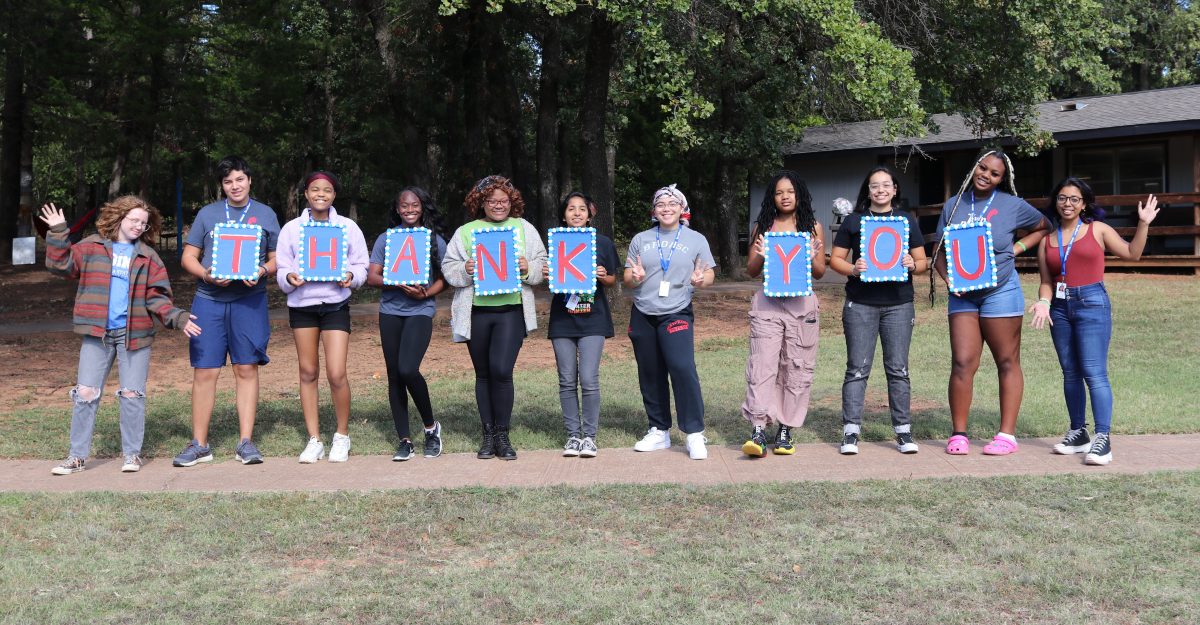
Reading this even though you aren’t a donor yet? No problem! You can support our programs here.
Sexual Health Conversations at Home
Many parents and adults believe sexual health should be discussed at home. And, we agree!
Unfortunately, these conversations don’t often happen at home. In fact, the vast majority of our students report, albeit informally, that they do not talk about sex with parents or guardians. The purpose of sexual health education in schools is to provide young people with medically accurate, age appropriate information in a setting where they feel comfortable. The need for these conversations in school is great. When young people don’t get this information, the risk of them making unhealthy decisions increases which can lead to unintended consequences and greater public health concerns.
With public education class requirements being what they are, Teen emPower! staff feel fortunate to be allowed two weeks per session in classrooms, but we could use a lot more. While we accomplish a lot, it can be a struggle to create a welcoming environment, thoroughly educate the class on health topics, and reinforce what they learn in such a short amount of time. Therefore, if young people and their parents could start or continue conversations at home, we would see more collective success for adolescent health efforts.
So, how do parents start the talks at home?
Don’t worry, we’ve got you.
Conversation 1: Discuss what makes you, you.
This topic of conversation is important for teens and parents to understand each other as individuals, not just as family members. Discussing parts of ourselves, like the things we value, can open the door and lay a foundation for future difficult conversations. It can also help the young person feel that they can open up about their life to the parent/guardian in a safe environment.
Examples of conversation starters:
- What are some goals you have for your future? What do you want to become?
- What are some of the qualities you like about yourself? Why those?
Conversation 2: Discuss thoughts on relationships.
When we say relationships, we are talking about various types of relationships, not only romantic or sexual. It’s important for young people to understand the influence of their friends and develop an understanding of what a healthy relationship looks like.
Examples of conversation starters:
- What are the things you look for in a friendship?
- What are some qualities you would like in a partner?
- What qualities do you think make a healthy relationship? Should those qualities only be present in romantic or sexual relationships?
- What have you seen in other relationships that you would like for your own?
Conversation 3: Discuss how to make decisions.
Decision-making is a learned skill, and something young people might struggle with as their brains transition from concrete thinking to more abstract ideas. However, decision-making is the cornerstone of health and it is crucial for young people to learn that the decisions they make could lead to unintended outcomes.
Examples of conversation starters:
- How do you feel about making a tough decision?
- What do you think about getting to make decisions for yourself?
- If you have to make an important choice, what could you think about to help make that decision?
If you have a teenager at home, or if there is an important young person in your life, we hope these suggestions can help kickstart an open and trusting conversation. Don’t forget, they may not want to talk to you at first. Their feelings are running the show, so they may need some time to process. It’s important to view these discussion topics as continuous conversations, not a one-and-done exchange. Having these conversations will show them that you care, and that’s the most important part.
World AIDS Day
Author: Clayton Bell
Since 1988, December 1st has been designated as World AIDS (Acquired Immune Deficiency Syndrome) Day, the first-ever global health day. It is a day to remember those lost to complications of AIDS. It is a day to show support to those living with HIV (Human Immunodeficiency Virus), the virus that is transmitted between people that can lead to AIDS. It is a day to remind all of us that the battle against AIDS is still being fought. World AIDS Day is also a day to learn how the pandemic began, how it is transmitted and treated, and how we fight back.
HIV is believed to have jumped to humans from chimpanzees in the late 1800s in central Africa. The virus slowly spread across the globe, reaching the United States in the mid to late 1970s. The first medical report of what would later be called AIDS appeared in the Morbidity and Mortality Weekly Report on June 5, 1981. After sending an investigative team to research, the Center for Disease Control published recommendations for the prevention of transmission in March of 1983.
Since the early 1980s, we have learned much about HIV and AIDS. HIV is an incurable retrovirus that attacks the immune system, which protects the body of an infected person. If left untreated, the virus can take over causing the immune system to become ineffective. When this occurs, an AIDS diagnosis may be given. At this point, any opportunistic infection can come in and spread easily throughout the body and do enough damage to kill the person.
The virus can be found in five body fluids of an infected person; semen, vaginal fluids, rectal fluids, breast milk, and blood. If someone comes into contact with any of these infected fluids, whether through broken skin or mucous membranes, the virus can be transmitted. As most of those fluids are typically associated with sexual contact, HIV is considered a sexually transmitted disease/infection (STD/STI).
However, the virus can be transmitted through non-sexual ways as well. When infected blood is shared, there is a high risk of the virus being transmitted. Sharing needles is the most common non-sexual way HIV is passed. Examples of this include intravenous drug use, tattooing, and body piercing. An infected pregnant person can also transmit HIV to their unborn child, during pregnancy or birth. As HIV lives in breast milk, the virus can also be transmitted after the child is born, if breastfeeding with infected breast milk occurs.
The impact of the AIDS pandemic is devastating. It is believed that more than 35 million people have died due to complications of AIDS since the pandemic began. Worldwide, it is estimated that there are currently more than 38 million people living with HIV. The number of people dying of complications of AIDS is going down, while the number of people getting infected with HIV continues to rise. This is a result of the advancements healthcare professionals have made in treating the virus.
Because it takes a high level of HIV in the body to progress to AIDS, medical treatment includes antiretroviral therapy (ART) that reduces the viral load. The FDA has approved more than 30 different types of medicines to treat HIV infections. A person’s particular combination of these medicines, or treatment regimen, depends on their individual needs.
The ability of ART to suppress the virus has come a long way since the first effective treatments were released in the mid to late 1990s. It is now possible for ART to suppress the virus to the point where it becomes undetectable on a standard lab test. While still considered HIV-positive, someone with an undetectable viral level can live a long and healthy life. Another benefit of this very low viral level is that the likelihood of that person transmitting the virus to someone else becomes very low as well.
Preventing transmission comes down to keeping a non-infected person away from those five body fluids of an infected person. External and internal condoms, as well as dental dams, help reduce the risk of HIV being transmitted sexually by creating a barrier between the partners that limit the exchange of body fluids. No other form of birth control reduces the risk of HIV transmission.
Non-sexually, HIV transmission can be prevented by not sharing needles. This is why there are so many campaigns across the country aimed at reducing the sharing of needles for intravenous drug users. This is also why there are such strict guidelines and rules that tattoo and piercing businesses must follow.
Some medicines can be given to an HIV-negative person to help reduce the risk of transmission as well. Pre-exposure prophylaxis (PrEP) is given to HIV-negative people who are at high risk for contracting HIV, whether it be through sex or injection drug use. PrEP reduces the risk of getting HIV through sex by 99% and is over 74% effective for drug users, when taken as prescribed.
Post-exposure prophylaxis (PEP) is a short course of HIV medicines taken very soon after exposure to HIV to prevent the virus from taking hold in the body. PEP must be started within 72 hours after a possible exposure to HIV or it won’t work. While PrEP can be taken long-term for someone who lives a high-risk lifestyle, PEP should only be used in an emergency.
HIV-positive people who wish to become pregnant should be on ART before the possibility of pregnancy occurs and they should take advantage of support services during delivery and birth to greatly reduce the risk of transmission to the new baby. Also, the baby should be fed formula, as opposed to breast milk, to further reduce the risk of transmission.
Otherwise, as long as those particular body fluids aren’t involved, there is no risk of transmitting HIV. Any sort of casual contact with an infected person has no risk of transmitting HIV. Casual contact includes anything from hugging to sharing combs or makeup to sharing food and drinks, among other things. The virus dies shortly after leaving the body, so there is no risk of transmission from places like toilet seats.
The myths and stigma surrounding the AIDS pandemic and HIV continue to permeate society, feeding the rise of new infections. Educating the population on the truths about HIV and AIDS is the only way we can hope to begin to see the numbers of new cases decline. Many resources and organizations are out there spreading information to those who may be at risk. But it is especially necessary to teach young people before they become sexually active.
If you want to know more about how you can help end the AIDS pandemic, there are many ways to get involved. Educate yourself and your friends and family with information from credible sources. Donate time and/or money to any of the dozens of organizations, both local and national, that have dedicated themselves to bringing awareness to and fighting HIV and the AIDS pandemic. They say it takes a village to raise a child. It will take the whole world to end this global pandemic. This is exactly what World AIDS Day is all about.
For more information on World AIDS Day, please visit www.worldaidsday.org.
Asset Building + Social Determinants of Health
Lead Author: Aicha Diop
In our last blog, we identified developmental assets and how these can be used to positively influence the lives of young people. However, our ability as adults to create and sustain asset building processes are largely determined by societal factors and cultural conditions. Basically, we have to consider social determinants of health to determine how to best build assets for our youth.
For example, we as a society struggle to develop assets in the positive identity category due to various social issues that are compounded by the media. If our young people do not feel capable, beautiful, worthy, or that they have goals for themselves, due to manipulated images or comparison to others online, they may not feel as developed in this category. This can potentially result in lower development in other asset categories, because young people who don’t believe in their self-worth might struggle to create positive values or set boundaries. Overall, developing internal assets, like positive identity, can be more difficult. Mainly because these internal assets rely heavily on the mental health of our youth in addition to the external assets they may receive from the community.
Understanding the role each of us plays in our students’ lives, and how we can develop positive assets in youth lives, is extremely important in creating a bright future for them. At Teen emPower!, we are committed to giving all young people the tools they need to develop positive relationships, make healthy decisions and be self-sustaining. We use an asset-building approach in working with the young people in our programs, and we believe all adults can be asset-builders for youth too. Not only that, but we firmly believe that youth can be important asset-builders for each other.
Teen emPower! has a goal to help improve adolescent health and lower the teen birth rate in Oklahoma County knowing this will help improve the overall health of young people and our community. Social determinants, or conditions that our students grow up in which can influence their behavioral outcomes, impact this goal. For example, in environments where there are low educational achievement rates there tends to be higher teen birth rates. After school programs are a specific example of asset building in action. If schools or youth-serving organizations cannot offer them due to lack of funding, those students are missing out on developmental opportunities.
It is the responsibility of programs like ours, and other community members who wish to be asset builders, to understand social determinants of health and consider how we can improve these within our community. Only when we develop healthy social determinants can we create an environment where all students can receive developmental assets essential to success. If we can make this happen, we would see not only a decrease in teen birth rates, but also a decrease in other risky behaviors and negative outcomes.
To help adults improve their skills as asset-builders, Search Institute has created a guide for building Developmental Relationships. It focuses on four simple areas of working with youth: expressing care, challenging growth, providing support, and sharing power.
We need asset-building programs and opportunities for youth involvement in our community, specifically ones that build up their self esteem, give them a sense or purpose, and prioritize their mental health and well-being. We need to create safe and equal environments and provide quality education for all young people. This includes, evidence-based programs on healthy decision making and other life skills. With a focus on the 40 developmental assets and relationships, along with an awareness of social determinants, we can better engage all of our youth in meaningful ways and help them build successful lives.
Everyone can be an asset-builder, including you.

